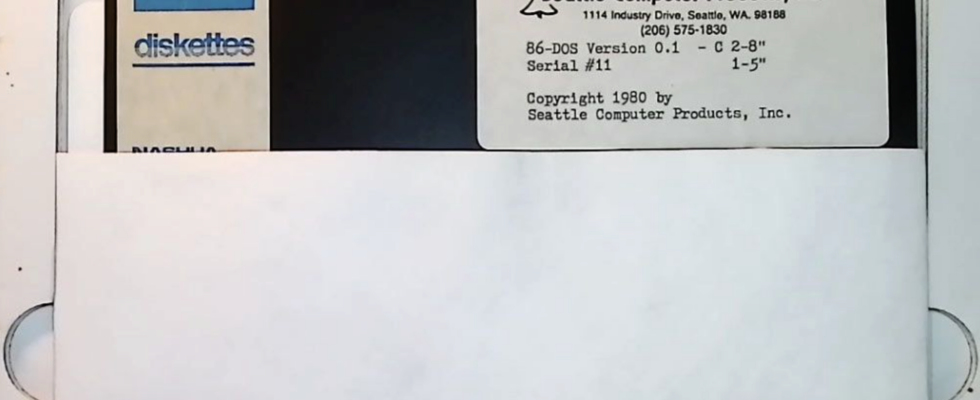An image of one of the very first versions of DOS was created from an old floppy disk and posted online on the Internet Archive. It allows us, seemingly insignificant, to take a nice leap back in the history of computing.
If you like exploring the Internet Archive, you can now find an image of one of the very first versions of DOS there. Coming from a floppy disk found after forty years, this version of the OS (which later led to the birth of Windows) appears to be the original 0.1 C version of 86-DOS, published in 1980 by Seattle Computer Products.
Computer science as the youngest have never known it
Accessible at this address, the image was shared by a certain f15sim the day after the holidays, accompanied by a photo of the corresponding 5.25-inch floppy disk, still slipped into its white paper envelope. On the label, the mention “Serial #11” is visible, as is the version number “0.1-C”.
Note that until now, the oldest version of DOS still available was 0.34. So here we go back a little further in time. This version 0.1-C is for its part very Spartan. The discovered floppy disk only contains 9 files in total. The COMMAND.COM core of the system was included to interpret command line instructions, such as dir, copy, clear and format.
When a tech “fossil” resurfaces
The disk also contained utilities for copying files and disks, a rudimentary text editor, and two or three developer utilities, reports Tom’s Hardware. At the same time, and although very basic, this version of DOS finally included a game: CHESS.COM, to which instructions are attached in a CHESS.DOC file.
If you want to test 86-DOS for yourself, simply retrieve the floppy disk image provided above and follow the instructions provided at this address to obtain a SIMH/AltairZ80 emulator compatible with the disk image of interest. currently.
Source : Tom’s Hardware / Twitter

10